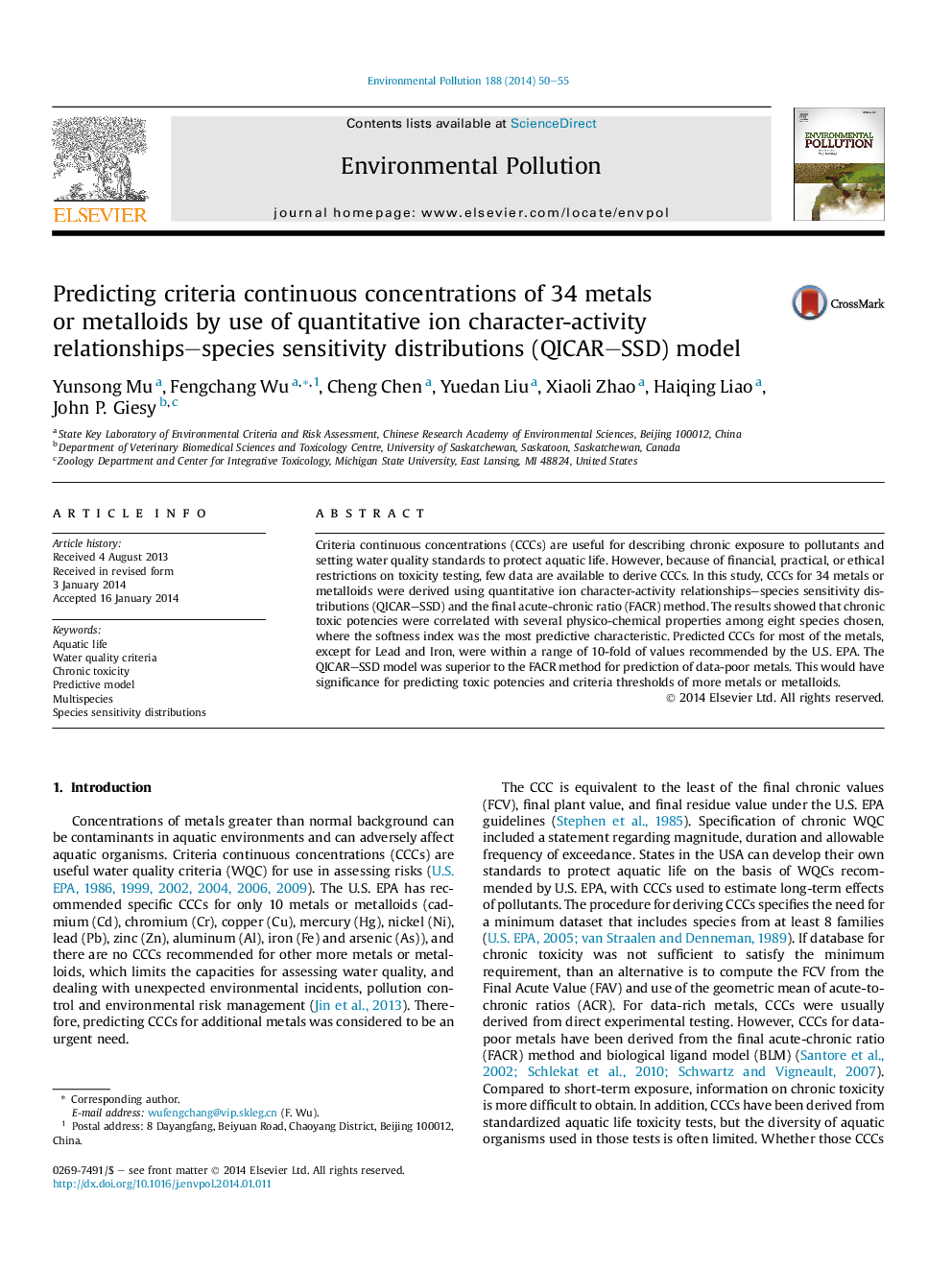| Article ID | Journal | Published Year | Pages | File Type |
|---|---|---|---|---|
| 6318043 | Environmental Pollution | 2014 | 6 Pages |
Abstract
Criteria continuous concentrations (CCCs) are useful for describing chronic exposure to pollutants and setting water quality standards to protect aquatic life. However, because of financial, practical, or ethical restrictions on toxicity testing, few data are available to derive CCCs. In this study, CCCs for 34 metals or metalloids were derived using quantitative ion character-activity relationships-species sensitivity distributions (QICAR-SSD) and the final acute-chronic ratio (FACR) method. The results showed that chronic toxic potencies were correlated with several physico-chemical properties among eight species chosen, where the softness index was the most predictive characteristic. Predicted CCCs for most of the metals, except for Lead and Iron, were within a range of 10-fold of values recommended by the U.S. EPA. The QICAR-SSD model was superior to the FACR method for prediction of data-poor metals. This would have significance for predicting toxic potencies and criteria thresholds of more metals or metalloids.
Keywords
Related Topics
Life Sciences
Environmental Science
Environmental Chemistry
Authors
Yunsong Mu, Fengchang Wu, Cheng Chen, Yuedan Liu, Xiaoli Zhao, Haiqing Liao Haiqing Liao, John P. Giesy,
